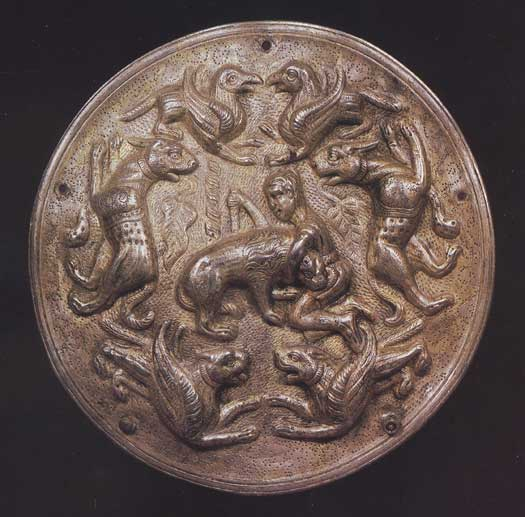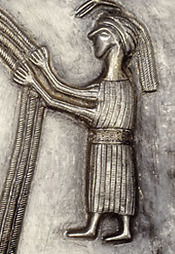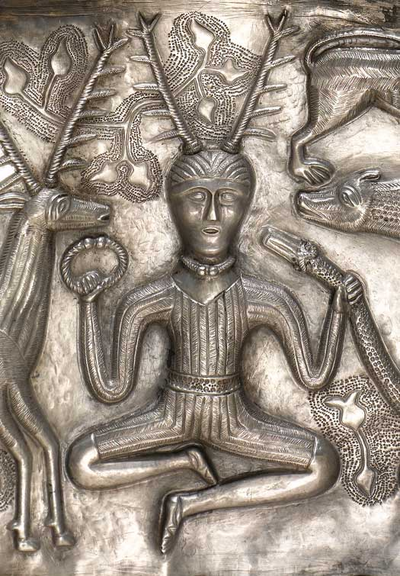A foreign costume?
Several of the god figures on the Gundestrup Cauldron are dressed in a tight-fitting costume, consisting of a shirt with long sleeves and trousers reaching down to the knee. The material is striped lengthwise in a herringbone pattern – perhaps to show a woven design. The costume also features a wide belt decorated with circles, and shoes or sandals with straps. Whilst the shoes resemble the type of footwear that Iron Age people used in Scandinavia, the clothes are more exotic. At this time Scandinavian people dressed in clothes which were of a looser fit, and no trousers or shirts have been documented from archaeological finds.
The Gundestrup Cauldron is a unique piece, but several of its features show a striking resemblance to a silver ornamental plate from the Thracian grave at Stara Zagora in central Bulgaria. Similarities can be found in style, technique and details of the motifs, as well as the date of between 150 BC and the Birth of Christ. The Greek god Hercules is depicted on the ornamental plate, dressed in a typical classical costume. This consists of a sleeveless, thigh-length tunic, belt and boots. He is fighting a lion. Even if the clothes worn by figures on the two silver objects are fundamentally different, distinctive common influences are evident, such as in the striped ornamentation. The Gundestrup Cauldron was probably also produced in the Balkans.



